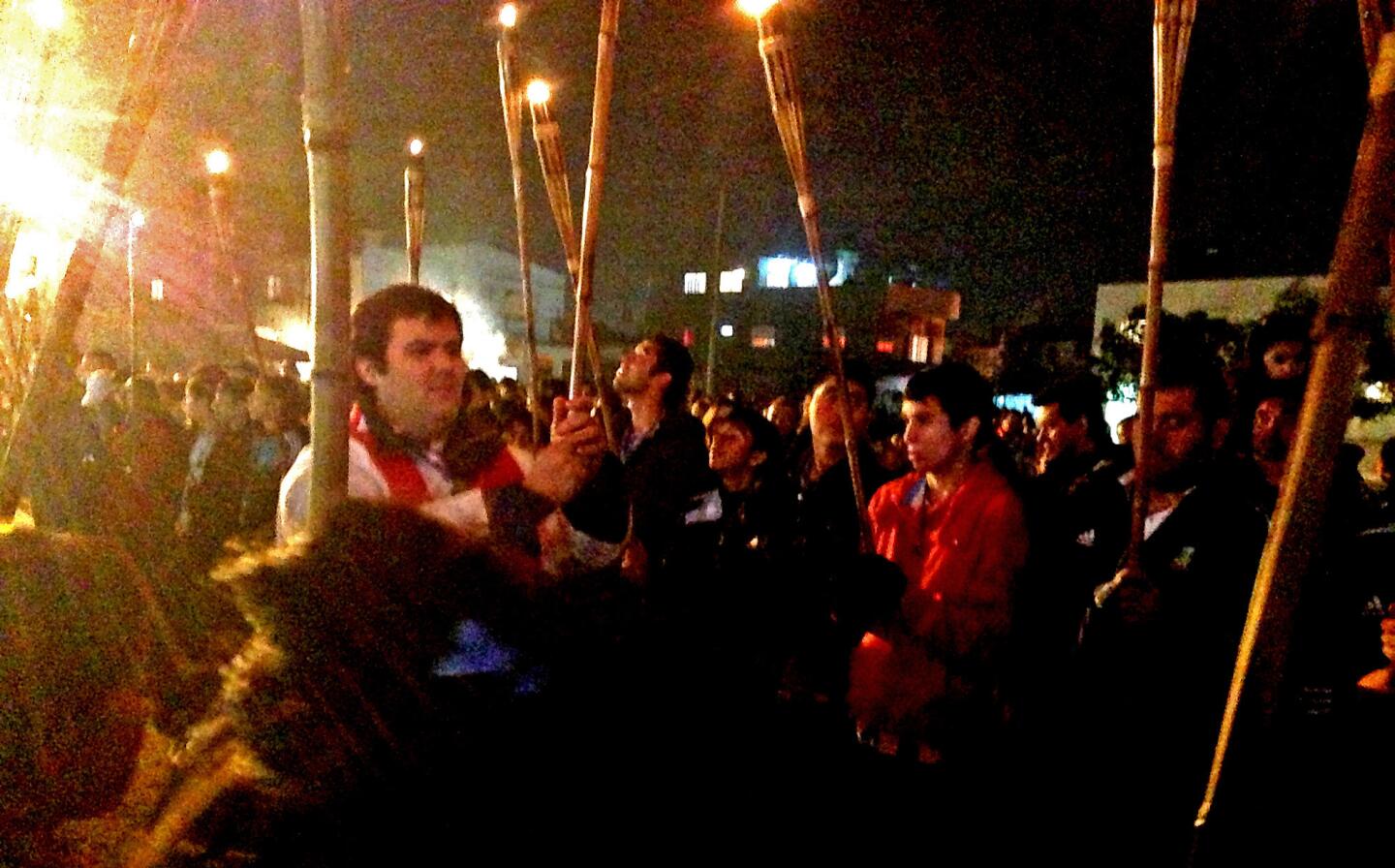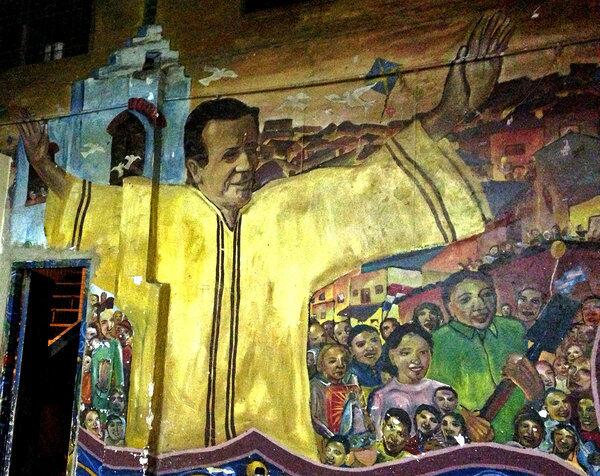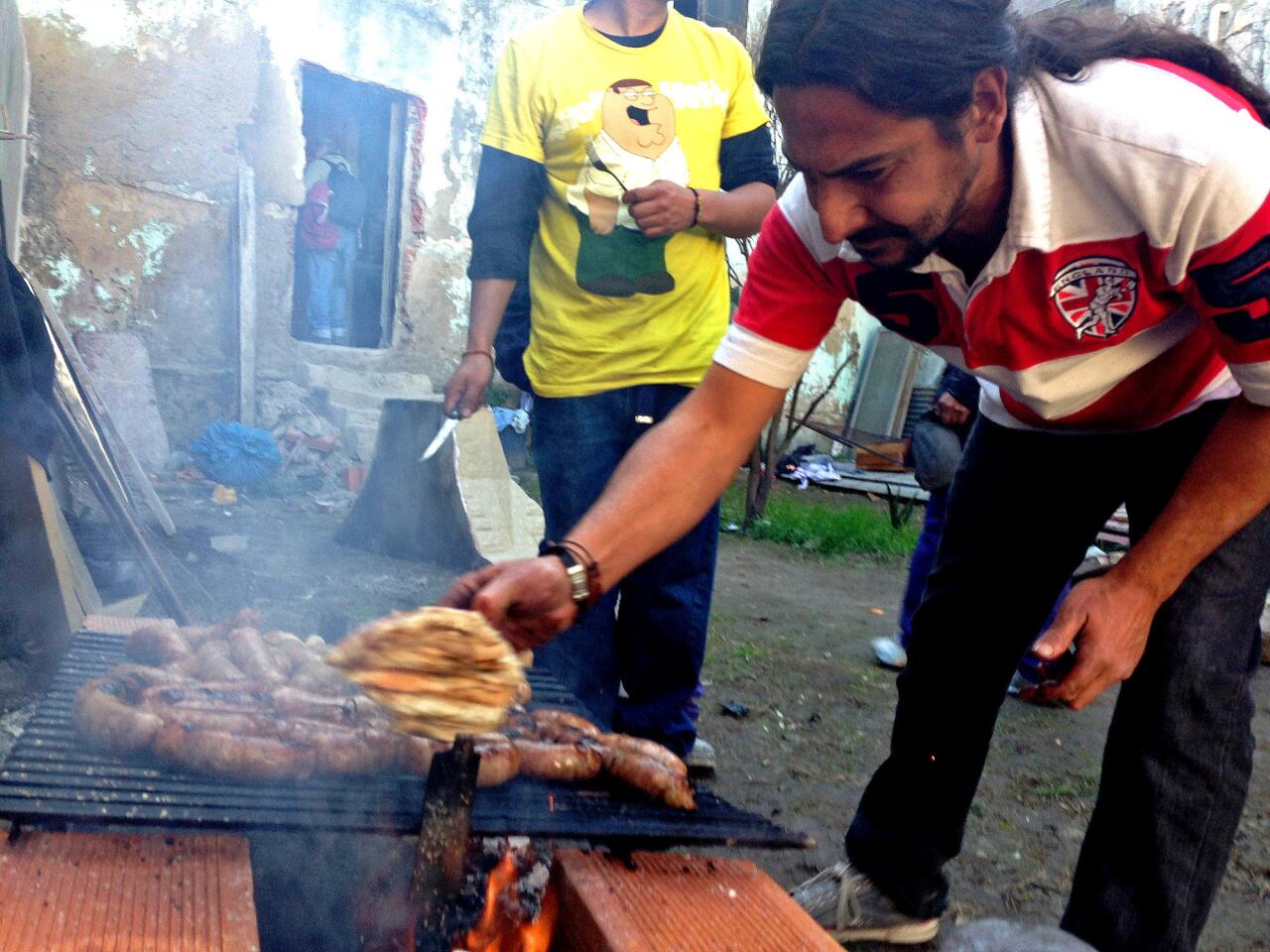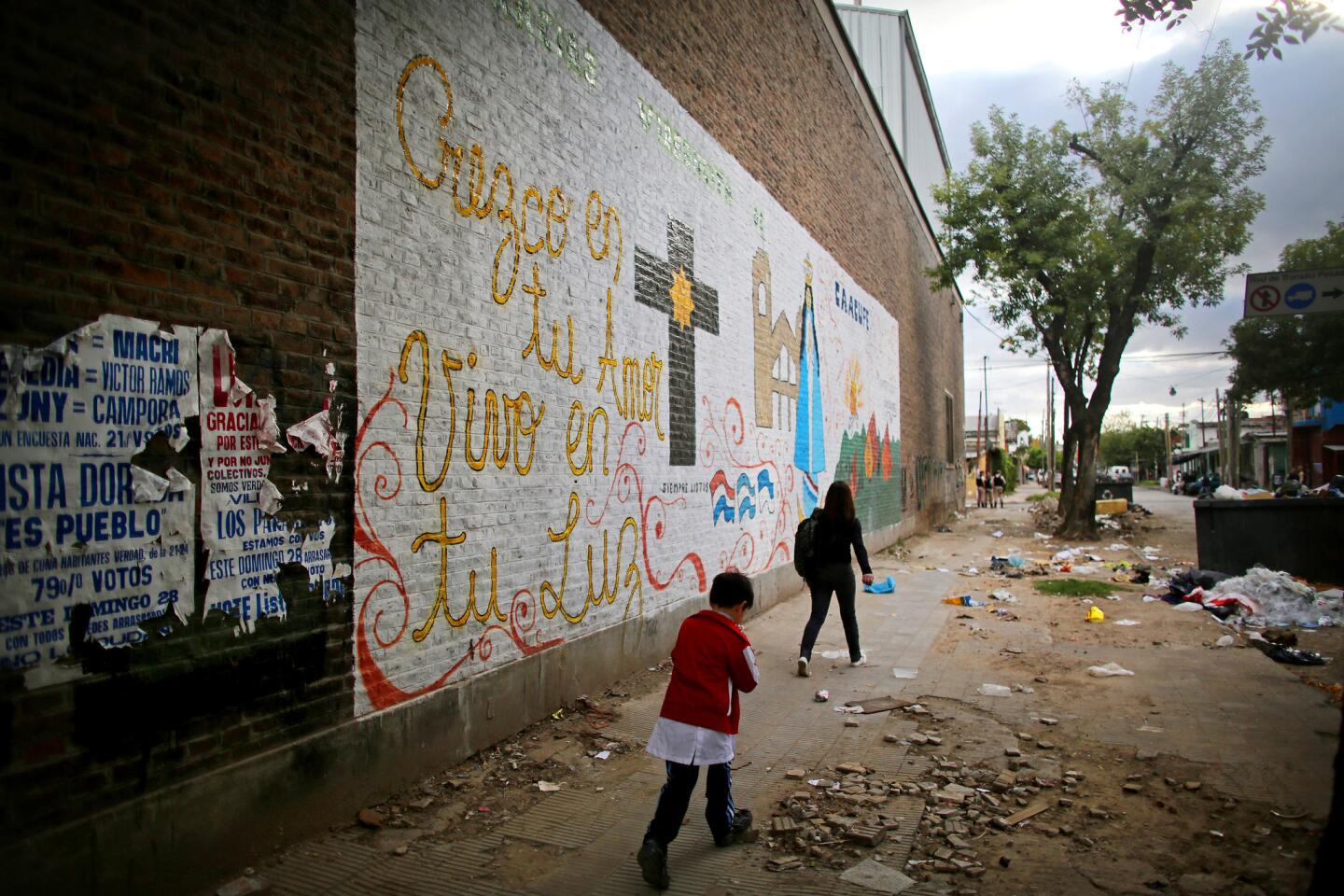Argentina’s ‘slum priests’

A priest takes part in the festival of San Juan. “Slum priests” have been working for decades in sprawling shantytowns far from the tango salons and Parisian cafe culture of the other Buenos Aires. They take inspiration from a priest named Carlos Mugica, who toiled in the slums in the 1960s and was later killed by a right-wing paramilitary group in the so-called dirty war. (Kate Linthicum / Los Angeles Times)

A mural in one of Buenos Aires’ shantytowns, where “slum priests” have worked for decades, combating poverty, drug addiction and homelessness. The priests now have the support from the highest ranks of the Catholic Church. Jorge Mario Bergoglio, who served as archbishop of Buenos Aires for 15 years before taking the title of Pope Francis earlier this year, made the slum priests a priority. He tripled their numbers, opened new chapels and visited frequently, usually arriving on his own by city bus. (Kate Linthicum / Los Angeles Times)

Graduates of a program to help drug addicts prepare a celebratory meal at a concrete church run by Father Carlos Olivero. “The parish is not a building; it’s the neighborhood, it’s the community,” says Olivero, who moved to the slum in 2002. He says his first focus is on helping people, not converting them. But he believes faith is contagious. (Kate Linthicum / Los Angeles Times)

The Villa 21-24 slum is one of the villas miserias in Buenos Aires, where “slum priests” spend as much time solving practical problems as they do spiritual ones. Pope Francis, who was archbishop of Buenos Aires, has long supported the priests. (Mario Tama / Getty Images)







